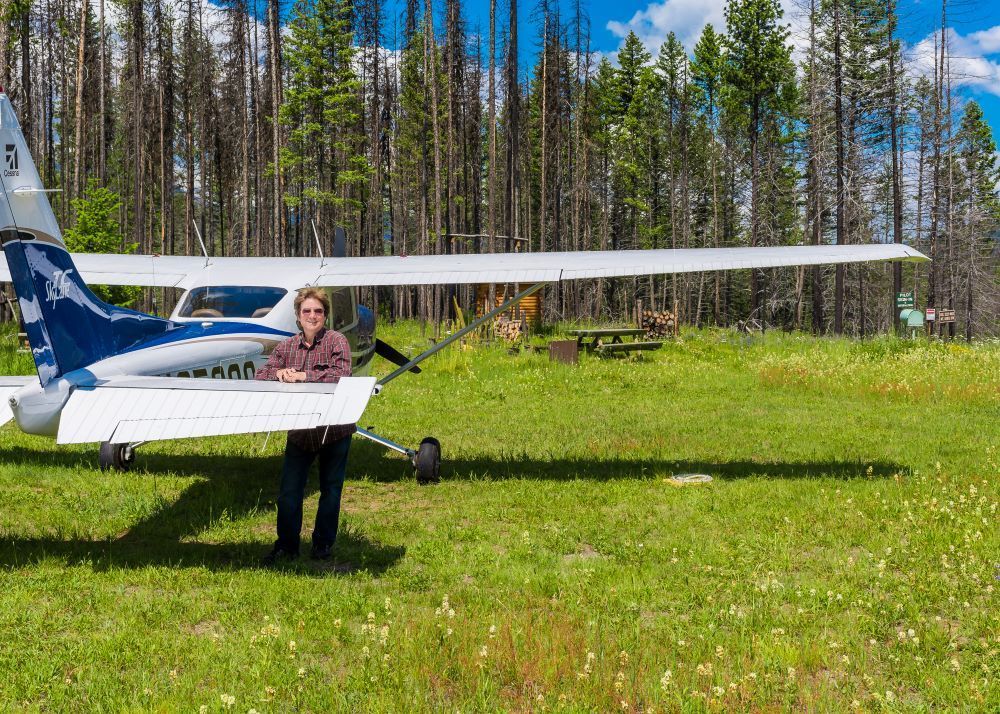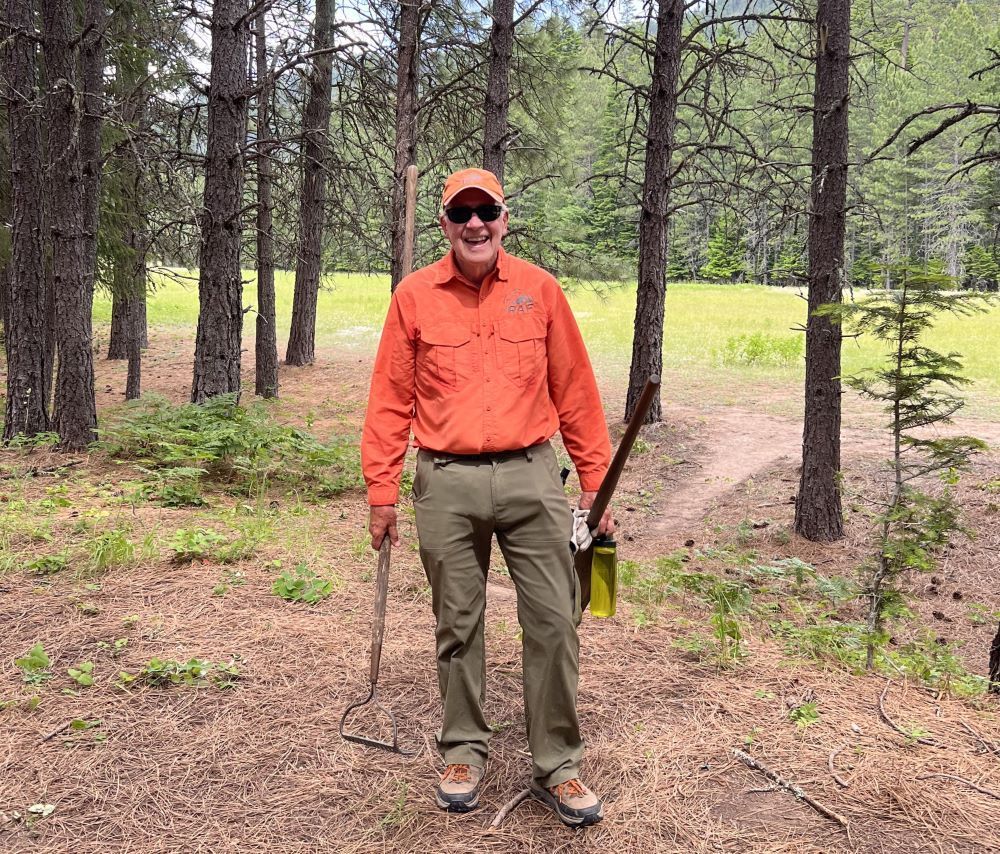News
Featured Supporters

The RAF often features aviation enthusiasts old enough to have a little graying around the temples. This month, we are featuring 17-year-old twins Joshua and Caleb Turner, sons of RAF Pennsylvania Liaison Andy Turner. The boys have been flying since toddler age, buckled in the backseat of the family C172, among a week’s worth of camp gear and diapers — there are no diaper stores in Idaho’s and Montana’s backcountry. But you won’t see those cross-country hours in the boys’ logbooks. Instead, you’ll see pages filled with the glider hours each has accumulated since age 14. Caleb says topping his list of “bests” is the feeling of “ flying solo for the first time in a glider.” Now the boys are well on their way to their PPL, and have logged dual instruction beside their Dad, a CFI, in the RV-10 that Andy built. Andy and Sharon Turner were headed into Montana’s Bob Marshall Wilderness when they were first acquainted with the RAF. Since then, Andy and the boys have helped at RAF work parties every chance they had. A few years ago, they’d journeyed back to Montana and were camped at Meadow Creek. When Andy gave the young boys a choice between fishing the South Fork, hiking, or joining Saturday’s work party at Ryan Field, it was unanimous — both enthusiastically voted for the work. The 14-year-olds spent the day splitting and stacking firewood, painting, mowing grass, and clearing brush, then they enjoyed the fellowship around a potluck meal. They brought their camp chairs around the fire and were welcomed in to listen in on flying yarns under the stars. Josh says, “The RAF has given me an appreciation for flying and wild places. We use some of the airstrips to access the backcountry. Without the RAF helping keep strips open and maintained, I may not have had some of these backcountry experiences.” Caleb agrees, saying, “The RAF has definitely had a positive influence on me and my family. If not for the RAF, we wouldn’t have such wide access and nice facilities at all of these backcountry airstrips.” Aviation is high on the boys’ list of life goals, and Dad says both Josh and Caleb are good mechanics. Both have participated in regional motorcycle trail races. “There is a certain symmetry in their motorcycle avocation, but Caleb is a consistent high finisher, and he has won a couple of these races. Joshua won All-Conference cross-country honors and is a two-time high school state qualifier. So, they each have their area of excellence,” Andy added. Caleb will attend Penn College of Technology for a degree in aviation maintenance, pursuing that as a career. “Earning a commercial pilot license later on could open up a lot of opportunities,” he added. Josh plans to graduate from college with a degree in fisheries and wildlife science. He’s considering future instrument and commercial licenses. “I don’t know where I see myself, but I would like to continue traveling the country by air if I can,” he says. These young men, as they approach college and their individual goals, have set a high bar for what we used to call “good citizenship” – a willingness to contribute time and energy for something bigger than themselves. Here’s how Josh puts it, “Through the various work parties I have been a part of, I have gained an appreciation for the people who put in more work than I do. Those work parties gave me an opportunity to give my time to help others. Because of that, I have participated in and helped organize community service projects.” “The boys are very different, but they share aviation, and a large part of that is thanks to the RAF. For that, I’m very grateful,” Andy said. As a postscript to this feature, Andy just added that on November 8, Josh soloed in the RV-10. Congratulations, Josh!

Anyone whose pulse quickens at the sound of a pair of Pratt & Whitney radials can identify with the passion that lifts Julie Boatman into the sky for her profession and her pleasure. Like the perfect pairing of wine and entrée, her husband Stephen Yeates complements her skills and drive with his own passion to…
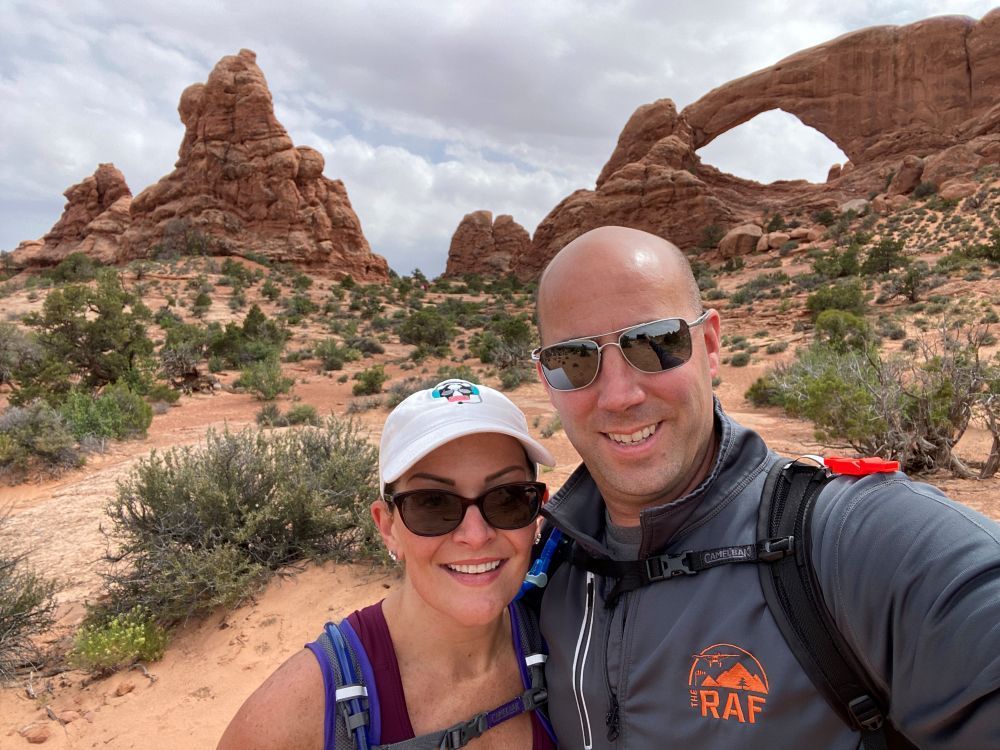
You could say Steve Jones has aviation in his blood. He is the IT manager for the company that operates the largest, most diverse private aircraft fleet in the world, hangs out weekends at his active local GA airport, AND is willing and able to volunteer his skills for the RAF. Steve helps manage the…
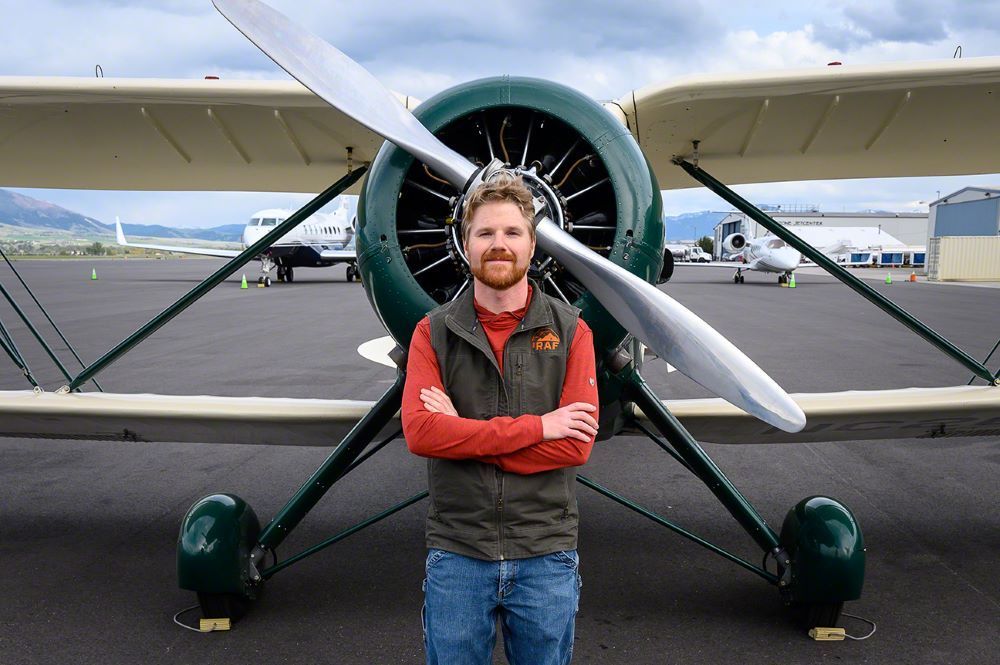
When the RAF Outfitter developed its expanded online store, RAF HQ called upon aviation photographer Jake Peterson to provide professional imagery of each product to help shoppers make easy and accurate selections. Jake happily volunteers his time providing all this work for the RAF, and it is greatly appreciated. Jake has always loved the outdoors,…
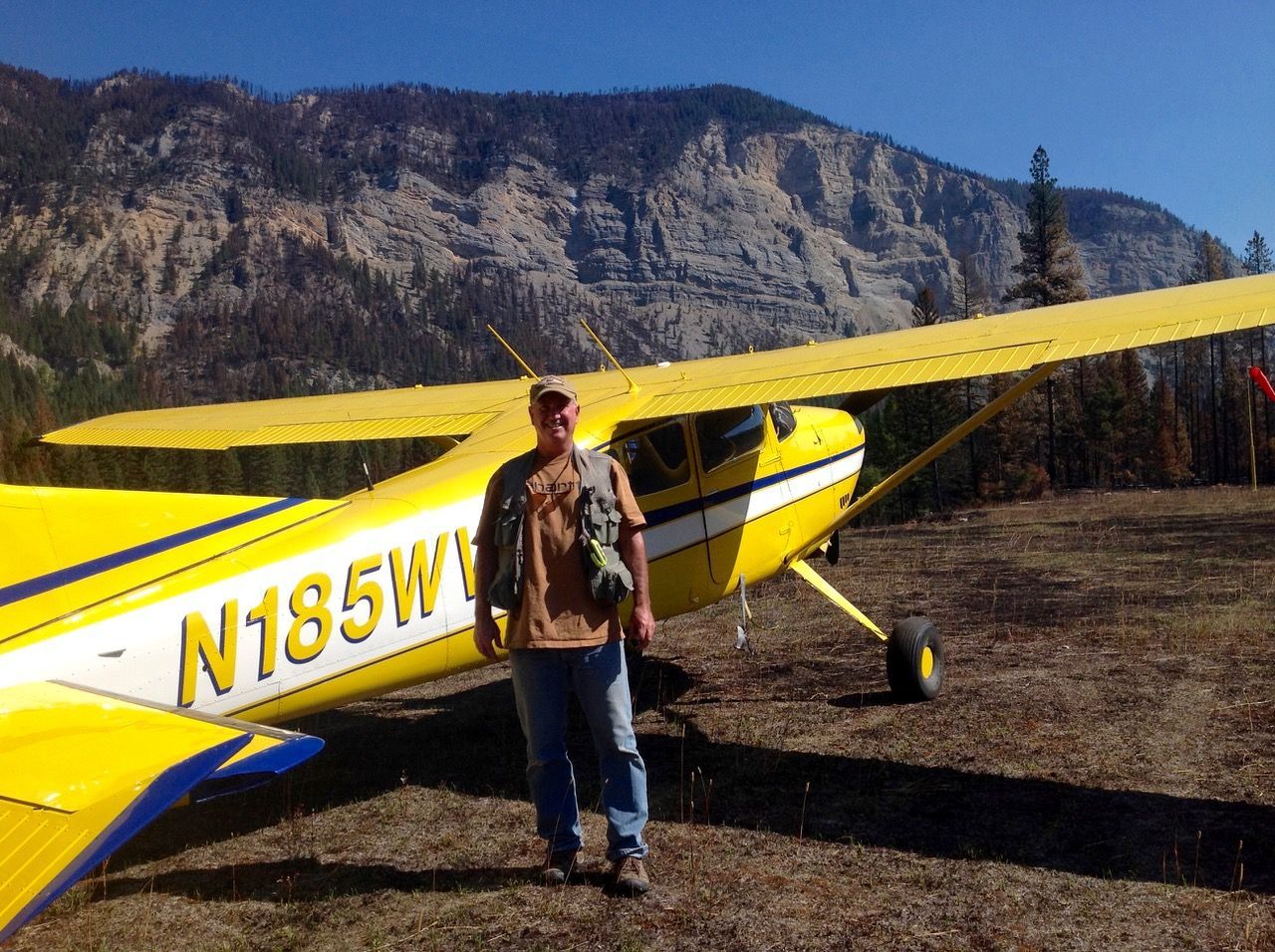
From flying in and helping build amenities at Ryan Field, MT, to flying delivery missions for projects at Forest Service airstrips in Idaho, RAF Supporter Robert Miller’s contributions to the RAF over the years have been many. Robert Miller was raised “one ridge over” from Charleston, West Virginia’s airport, close enough that he was one…
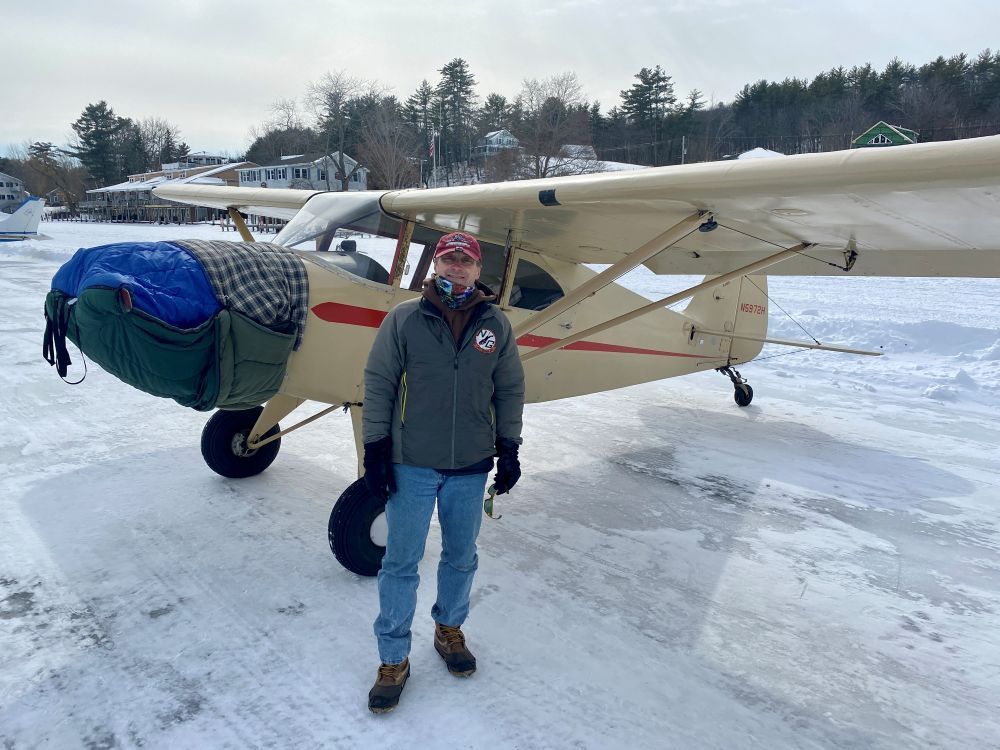
From watching a radar screen the better part of his work day, to watching out the windscreen of his 1949 Piper PA-16 Clipper, RAF Supporter Donn Castonguay is very happy to have made the transition to his place in the GA world. He and his wife Suzanne enjoy leisurely flights over the green rolling hills, colonial architecture, and covered bridges of the Northeast from their home in West Cornwall, Connecticut. RAF Liaison Drew Lyons — then of Connecticut — got the couple engaged in work parties at Mt. Tobe (Waterbury airfield), one of the few remaining public turf airfields in Connecticut. Suzanne and Donn recognized and appreciate the RAF mission to preserve this and other idyllic airfields against development pressure and willingly pitch in to help. Donn’s career was a New York Center controller located at Long Island MacArthur Airport. He might have been the voice on your radio when you asked for flight following, or transitioned into or out of his busy New York airspace. Donn retired in 2018, trading busy Long Island for Connecticut’s quiet corner. His wife Suzanne, also retired from her career as an architectural consultant specializing in “curtain wall” construction — the high-rise glass and metal wall designed to move independently from the floors. They met in college at Pratt Institute in Brooklyn, both pursuing architecture, then Donn discovered a new interest in aviation. He got his private pilot license in 2010 and wanted his tailwheel endorsement, which Berkshire Aviation in Great Barrington, Massachusetts provided in their Cubs. Flying with the Civil Air Patrol Oxford, Conn. Squadron, Donn tows gliders during CAP’s summer ten-day Academies and enjoys his role helping teens solo in those ten days. “There’s nothing like soloing an airplane to make someone feel that they can do anything,” he says. Many cadets advance to the Air Force Academy. Piper’s first Clipper rolled out of the Lock Haven factory in 1949, priced just under $3,000. Donn found this one in March of 2018. The plane is perfectly suitable for Donn, Suzanne and camping gear. They flew it to AirVenture in 2021, enjoying the Piper Short Wing gathering along the way. They have flown to Sun N’ Fun, and to an Antique Airplane Association fly-in in Blakesburg, Iowa. To get a dose of high speed flying, Donn attended several Reno Air Races with a friend. Castonguays have two grown sons. One is employed in a New York area school for autistic children. The other settled in Maine after discovering his passion for boats aboard a windjammer out of Penobscot Bay. He is engaged in digital design for boat builders. Today, Donn flies photo missions for the state with his CAP squadron, and serves as a lifeguard at the local YMCA. He enjoys motorcycle touring, and tinkering with their 1993 Volkswagen “Weekender” camper van. He and Suzanne enjoy a half-day flight to a favorite camping airfield, like Plumb Island, north of Boston where they take a car to the beach, or Parlin in New Hampshire where the RAF made improvements, and you can bicycle to a nice dinner in Newport. In contrast to the West with its higher elevations, density altitude and convective turbulence, Donn points out, “You don’t need a 180 here in the Northeast to enjoy beautiful flying over forested areas with welcoming small towns here and there.” In fact, at 100 mph, one can really enjoy sightseeing New England. Submitted on January 10, 2025 By Carmine Mowbray
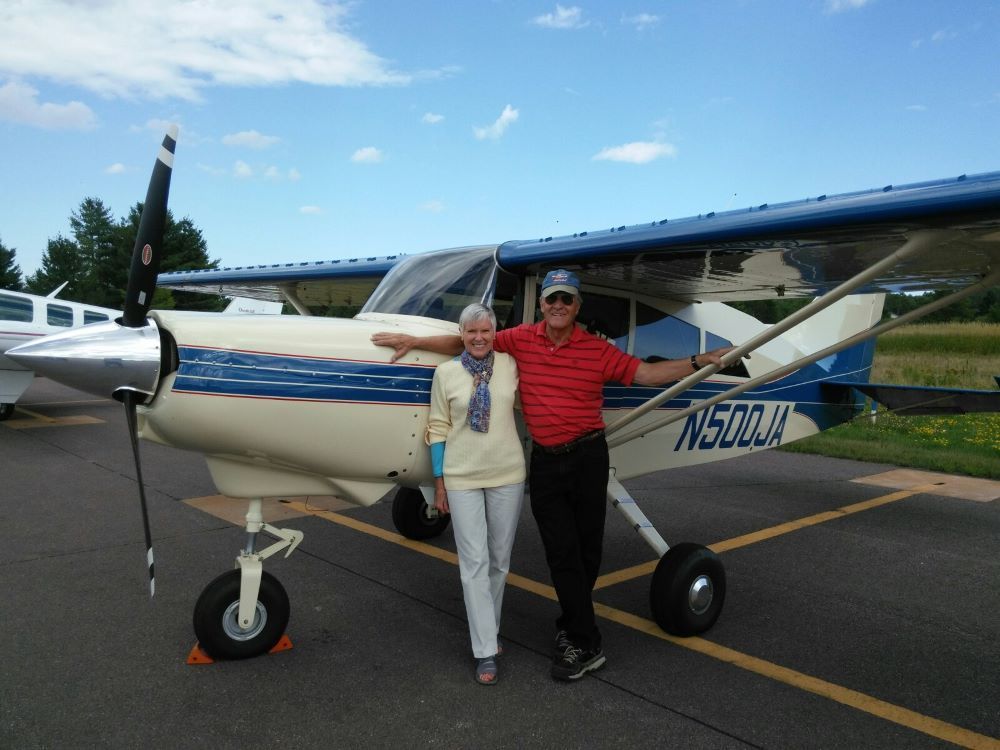
“Buy a Maule,” Bob Gillette said to his friend Chuck Aldrian when Chuck retired from his Milwaukee-based architectural firm. Chuck had been regularly flying his Cessna 310R to oversee his projects all over the country, from groundbreaking, through the ribbon cuttings. Chuck’s wife Judy points out that the twin was a wonderful way to take the family to faraway places for vacations, as well. “I had 2,500 hours in the 310, and I credit it for the success of my architectural business,” Chuck says. ”I’d get a call, and take one or more of my staff to make a site visit. We’d be home by dinner,” he added. Chuck earned his private pilot license in 1967, and muses, “Two days afterwards, I loaded Judy and our two young children in a Cessna 150 and flew into Billy Mitchell Field. Can you imagine four people in a Cessna 150 among the DC3s and DC6s? But we were all lightweights then.” When Chuck and Judy no longer needed their 310 for business, they wanted to relax and enjoy a different kind of flying. “So we bought a brand new Maule,” he said. Chuck took the mountain and canyon flying course in McCall, Idaho and the couple started flying to backcountry airstrips. That began their new form of exploration, and distance didn’t seem to matter. “In addition to out West, we took it to Key West, Eastern Canada, and twice to Alaska,” Chuck says. They flew commercially to Australia and joined a guided group in C172s, logging 40 hours over the continent Down Under. “One day I asked Judy if she wanted to see some polar bears, and we flew up to Churchill, Manitoba on Hudson Bay.” The huge runway was built for defense during World War II, and the Aldrians found it amusing to see their little Maule alone on the tarmac. They loved their four days there, and were rewarded with views of the bears and beluga whales. They learned about “a little grass strip near Glacier Park,” from RAF co-founder Chuck Jarecki, and they landed at Ryan Field even before the RAF became fully involved. They enjoyed knowing Ben and Butchie, and flew out for several Ryan Fly-ins and became RAF supporters. Both Judy and Chuck are well into their eighties now. They’ve sold their expansive northern wooded property and vacation home that Chuck designed and built near their dear friends the Gillettes’ Lakewood Lodge. Chuck and Judy enjoyed 1,200 hours in their beloved Maule before selling it and its hangar. As Chuck reflected on their last flight, there was deep emotion in his voice. “It was October 2016. We flew to Lake Superior for lunch, over the beautiful fall colors and our house in the woods.” Chuck and Judy remain active in their EAA chapter. Thanks in part to his dedication flying 458 Young Eagles, and his over 50 years of safe flying, Chuck earned the Wright Brothers Master Pilot Award. “Flying, and the RAF brought so much fun and joy into our lives,” Judy says, “We will remember it forever.” Chuck added, “ We have met so many wonderful people, it has enriched our lives.”
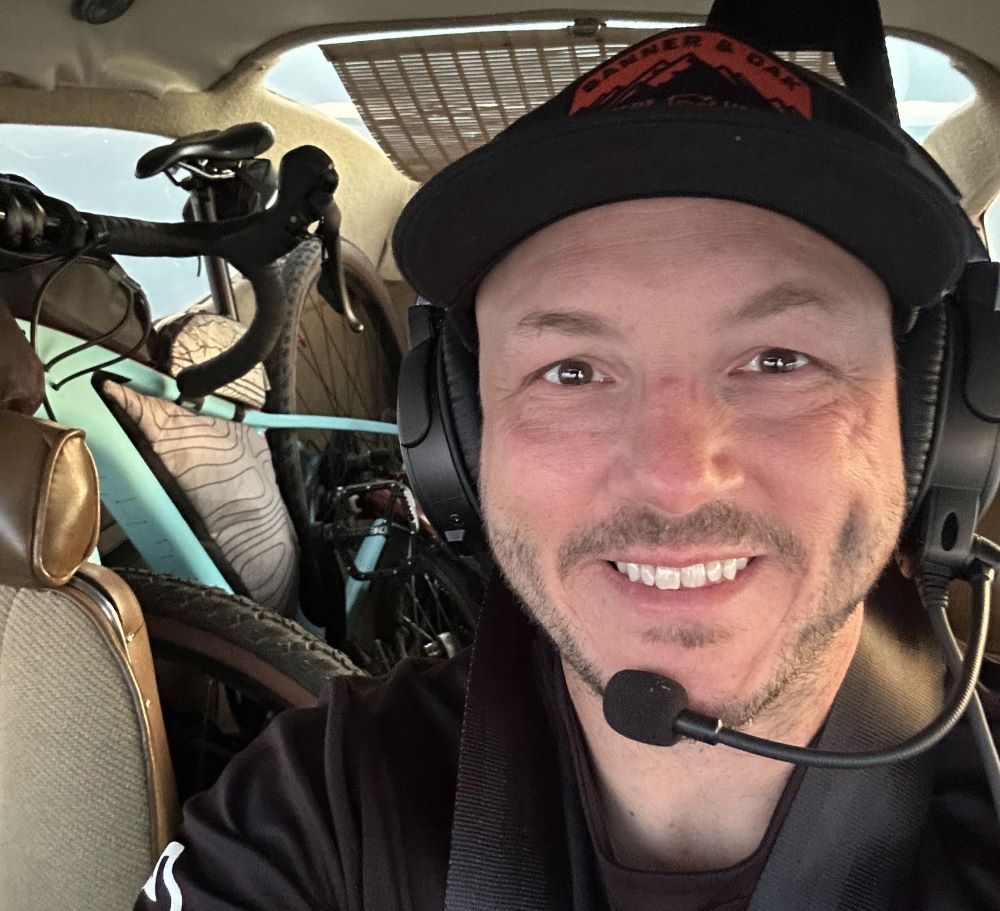
Matt Rhoades caught the flying passion from his employer at Setpoint Systems Inc. who flew a Cirrus out of Centennial, Colorado. One day he picked up Matt and a colleague from their Scottsdale meeting and flew them to Las Vegas for dinner. “That planted the seed,” Matt says. “It’s one thing to land at McCarran in a 737 looking out the little window. It’s another thing to be in a Cirrus with a 360º view!”
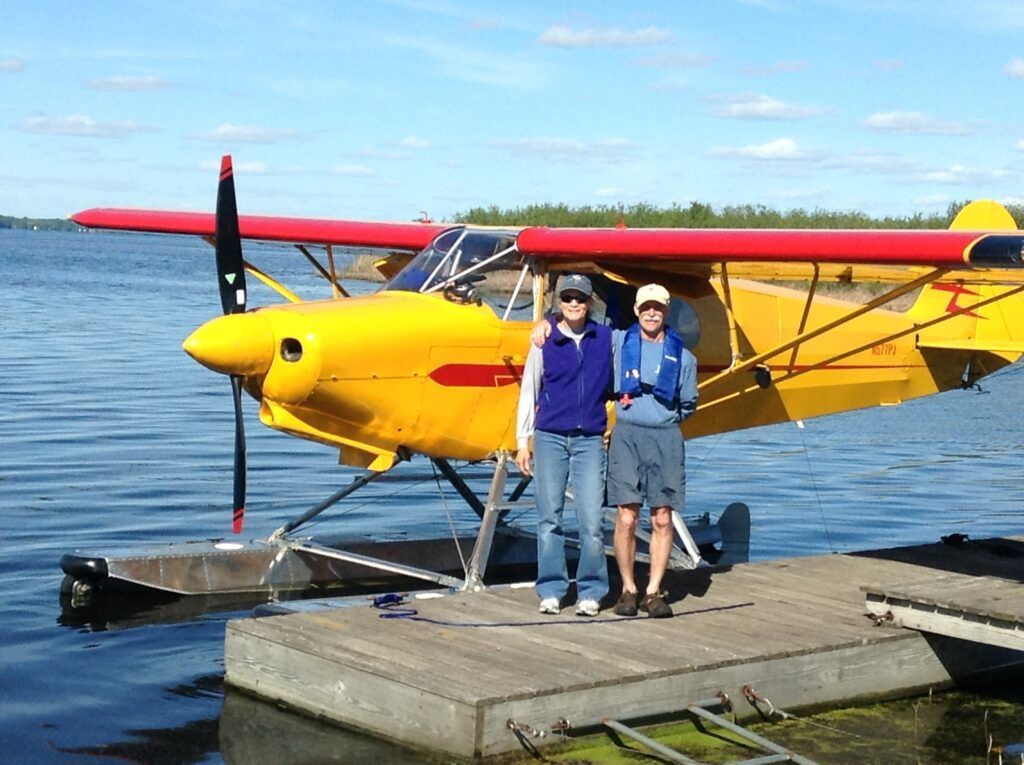
Some hundred years after the event at Kitty Hawk, two Wisconsin brothers calling themselves the “Wrong Brothers” built their own ultralight, and like Wilbur and Orville, attempted to teach themselves to fly. At least the more recent sibling duo had the advantage of a book on flying techniques. “We’re still here,” says Jeff Plantz, one of the Wisconsin brothers. But the bug had also affected their father, and when he was age 60, they bought a Cessna 172 – that remains in the family, in addition to his brother’s Cherokee, and Bellanca Cruiser. Jeff and his wife Patti earned their private ratings. When Jeff and Patti decided to try some float flying, “We learned we couldn’t rent a seaplane, so we built one,” Jeff says. He met RAF Director Jeff Russell who had a Cub across his home airport at Madison and was impressed with it. Beginning with a Piper PA-14 Family Cruiser, they assembled a side-by-side Cub on amphibious floats with plenty of baggage room for their many cross-country adventures – the payoff for those ten years it took to assemble the aircraft. Patti and Jeff have a unique appetite for adventure. After college, he had his own counseling practice. But “the urge for goin’ ” affected both Jeff and Patti, and they became what he calls “bed buggers,” or long-distance truckers. They bought a semi tractor, with a custom-designed cab and sleeper with the amenities they wanted, especially considering they brought their young child on their trips. “We’d work hard for two weeks, get rid of the trailer, then camp at National Parks, or stay with relatives from Seattle, or Colorado, Florida, to Vermont.” Following that enterprise, they operated a jewelry business, repairing watches and clocks while their kids grew up. Jeff went back to driving, and took a Fed EX route while Patti provided accounting services. “Patti is a heck of a trooper. She’s a great taildragger and floatplane pilot. We’ve been together nearly 50 years, and she tolerates stuff like when I alerted her of a huge credit card charge for those amphibious floats,” he said. Jeff’s social conscience led him to a job with Head Start, and among all these engagements, he and Patti have fit in many flights throughout the country. After ten years of flying the Cub on floats, they’ve exchanged them for wheels. Close to home they’ve helped out at Gillette’s Lakewood Lodge, Cornucopia, and have ventured much farther through Montana and Idaho, enjoying camping in the Missouri Breaks, Ryan Field, and Johnson Creek. “You usually run into very nice people,” Jeff says. This autumn, the fall colors sparked their wanderlust, and they drove their RV to Nova Scotia. So if you do catch a glimpse of this interesting pair of travelers, be sure to thank them for their support of the RAF. Submitted Oct 14, 2024 By Carmine Mowbray
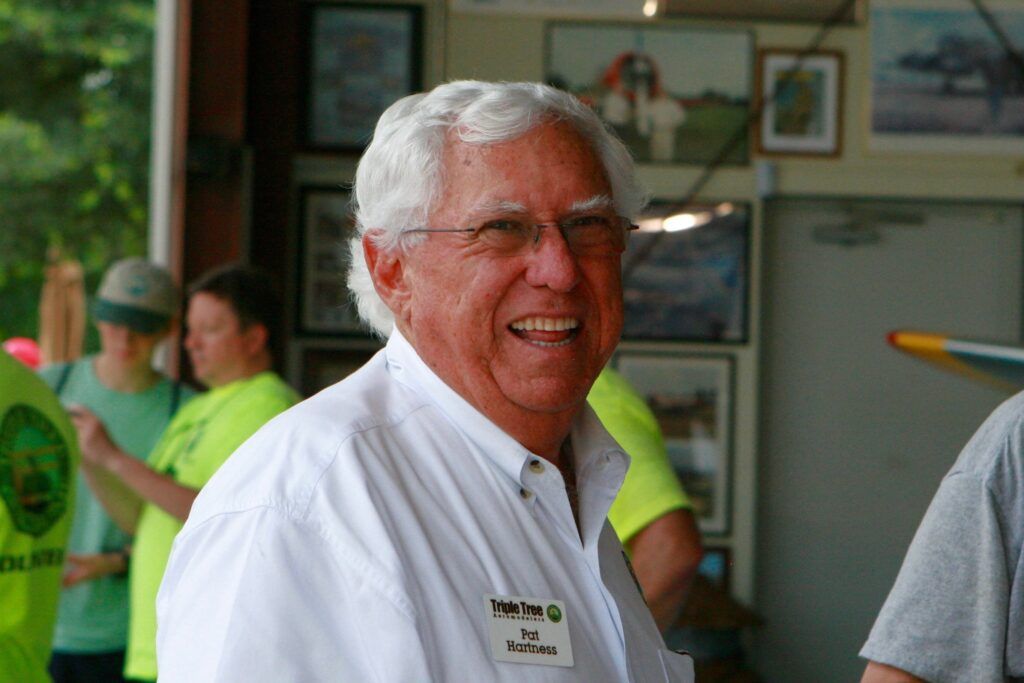
Pat Hartness laid aside his logbook at age 75 after a remarkable life in aviation.“It was the perfect opportunity to start driving a tractor and still stay actively involved in aviation,” he says. It opened a new chapter of his passion to inspire others. After 8,000 VFR hours in everything from PiperCubs, an AirCam, St
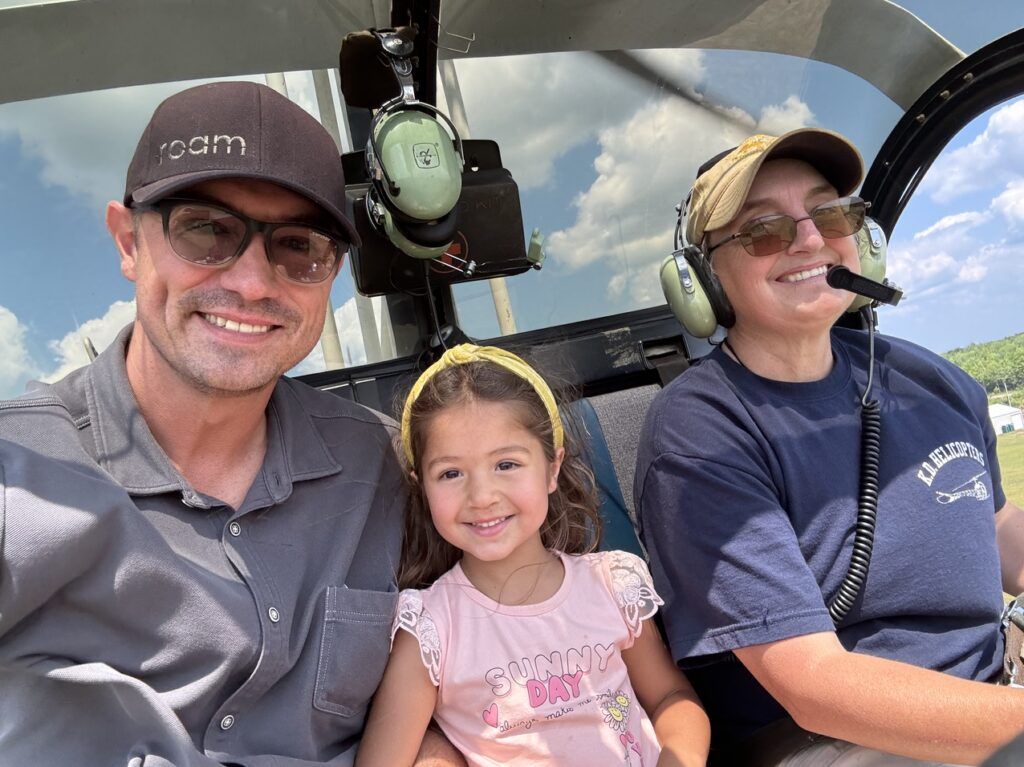
When Tom Dolaskie returned from his service in the US Air Force to his hometown of Munising, Michigan in 2008 he saw the effects of the economic downturn. As he walked among the many vacant buildings and abandoned houses, he didn’t see a doomed town, he saw opportunity. Today, visitors to this scenic town may be drawn by its natural beauty and recreation, but are rewarded with choices for eco-exploration, fine dining, and the luxury of five-star hotels. Tom and his sibling-partners tapped their complementary talents and world-wide experiences, added a partner, and worked to create an extraordinary destination. Tom’s wife Ana’s career is restaurant guest experience, and she manages their fine dining enterprise. Together they created the Roam Community Foundation, which is focused on improving the quality of life in Munising. Their town is nestled in the mixed forest along the shores of Lake Superior, near Pictured Rocks National Lakeshore, and trails through the 880,000 acre Hiawatha National Forest. Summer tourist season is short in the Upper Peninsula, but thanks to the vision and determination of Tom’s team, there’s plenty of economic activity to sustain this town of 1,800 residents. The Roam Community Foundation keeps folks engaged all year long with events, good-spirited competitions, and heartwarming fundraisers. Hanley, the local airfield hosts EAA Young Eagles flights, and Tom and his son enjoyed a flight together. Tom realized he now had the opportunity to accomplish a long-time goal to become a fixed-wing pilot right at home. He’d been around C-130s and Blackhawks in the Air Force, and he’d already taken rotor-wing training. He bought a 1943 Taylorcraft. Tom’s introduction to the RAF was all about improving his local airfield, rather than flying cross-country to backcountry places. The airport had reached a tipping point of failure or change. In 2023, RAF Director Jeff Russell and retired Naval aviator Roger Bentlage from Marquette County Flying Club addressed a local crowd about the benefits of supporting their town airport. “Jeff and Roger calmly and professionally engaged, even with those opposed. I was so impressed by their passion,” Tom said. “I realized that with my experience, I could execute some improvements. ‘Can’t be done’ does not live in my world,” Tom added. RAF Michigan Liaison General Grant said, “Tom tackled remediation, rehabilitation, and investment with the same dedication and vigor as he had done in his other efforts for Munising.” Tom was also affected when he saw visitors arrive at the airport with their own Subway sandwiches. “They had no way to travel the last mile,” Tom observed, so his nonprofit provided an airport courtesy car. Now visitors landing at Hanley can enjoy the new restroom, shower, and kitchenette, then drive to town and find many attractions among its variety of vibrant shops and businesses. Tom has lived and worked all over the world, and continues as an executive in their global IT enterprise. “I’ve moved forty-three times,” he said. When he was opening the Montage in Beverly Hills, his dad called to say his mother was terminally ill. That triggered his return to Munising, and settled his sense of home. His brother and sister live in homes next door. “Our kids all play together,” he added. They lost their dad not long after. “Losing people who are important to you, critical to your purpose . . .I needed to turn those losses into motivation,” he said, “ and I went full throttle from then on.” And the town, and anyone fortunate enough to visit are beneficiaries of all this family dedication and enterprise. Submitted August 14, 2024 By Carmine Mowbray
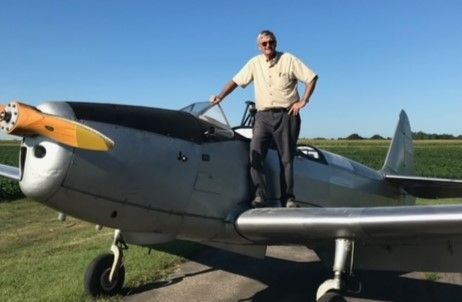
For a fellow who’s flown every sort of aircraft, and has landed all over the world with the late Hall of Famer, Buzz Kaplan, Mr. Jim Hanson of Minnesota still finds complete joy in flying low and slow, and sharing the joy with others. He loves flying his Lake Amphibian among what he claims are more accurately Minnesota’s “over 11,000 lakes.” His latest flight of note was over the U.S. Capitol in a King Air through our nation’s most complex airspace with AOPA’s commemorative formation celebrating our freedom to fly. Fascinated with all types of aircraft and the people who fly them, Jim finds aviation folks and issues, and writes about them for several aviation publications, including Midwest Flyer, and Minnesota Flyer. As a pilot, Jim has flown 392 unique aircraft types, and has accumulated over 32,000 hours in his 63 years as a pilot. From his Kolb ultralight on floats, a Zenith 750 STOL, to Falcons and Sabreliners. Following 2 1/2 hours flying NASA’s Space Shuttle simulator, he was approved by NASA to land the King Air on the Cape’s 15,000-ft shuttle runway—the first civilian to do so. Describing the experience, he said, “I fly gliders, jets, and King Airs, and after flying the Space Shuttle simulator, I was confident that I could match the Shuttle landing profile — but in order to match the approach speed of 235 kts and 6,600 fpm rate of descent, I asked to land downwind”.
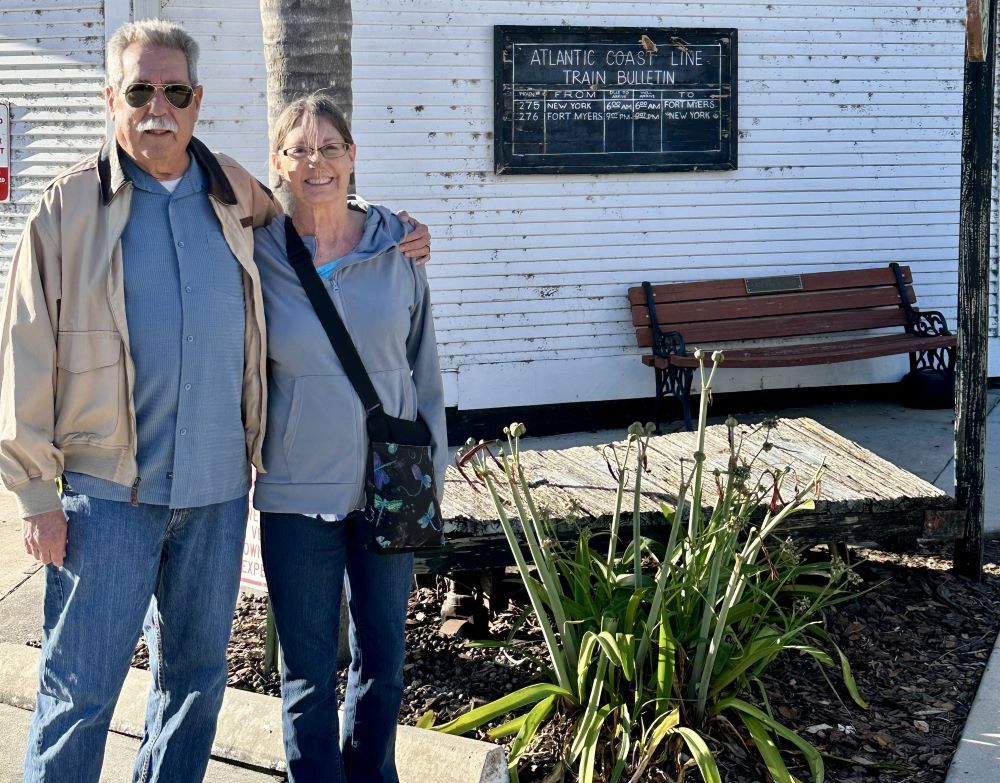
Glenn and Carol Punske-Brasch give back through public service. Like many pilots, Glenn always wanted to fly. He grew up in Chicago, attended college at Southern Illinois University where he began to fulfill his dream of flight fairly early in life by getting his private pilot license. Another desire was to find clearer skies, so he moved to Tucson, Arizona in 1974. After serving as a beat cop and first responder, he was able to further his dream to fly helicopters, and his path placed him squarely in the Flight and Safety Department of the Tucson Police Department, “chasing criminals with a helicopter,” he says. He soon earned Commercial, Multi-Engine and Instrument ratings for fixed wing and helicopters, and has instructed in both. Glenn met Carol Punske at a health club and eventually they married. After twenty-one years in the police department, Glenn retired in 2001 and took time away to help Carol raise their son, then shifted to another area of public service. Glenn signed on with PHI Air Medical as a medevac helicopter pilot. “It was very rewarding work,” Glenn says. “I saw people on the worst day of their life, and was able to help them.” He admitted there were times the weather was so bad that he should not have been in the air, “but it was worth it,” he adds. His company had fifty flight bases and got calls from all across the Southwest US but the busiest base, ironically, was tiny Safford, AZ. Why? Because it was about equal distance from the larger cities of Phoenix, Albuquerque and El Paso. “If someone is injured, they want to be treated near their home, not near ours,” he said. Carol is as dedicated to public service as Glenn, and served 30 years in Arizona’s Child Protective Service as an abuse investigator. In her “retirement” Carol worked ten more years for a nonprofit agency serving kids in foster care. She has been repeatedly honored for her service and just recently won the “Heroes Without Capes” award from Southwest Arizona’s Childrens’ Advocacy Center for her dedication to ending child abuse and her compassion for children who need safety and healing.
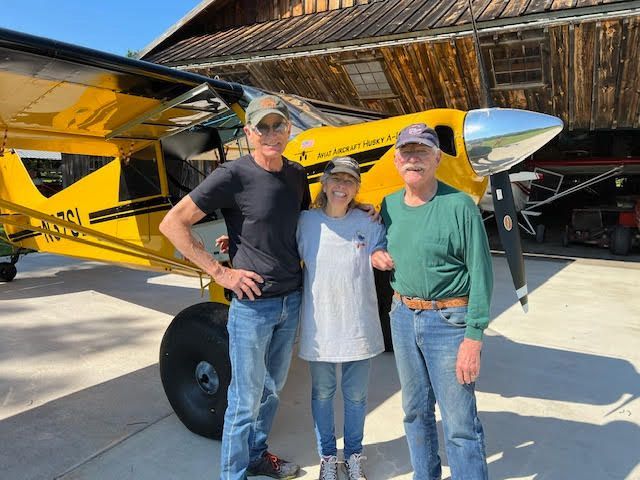
When Jerry Wilke believes in an organization, he invests his heart, his soul, and leans his shoulder in. He observes, finds the best fit for his experience, and has come away from his 35-year career with Harley Davidson with a mastery of what motivates people to seek and find fulfillment in a sport, a product, and a lifestyle. For a guy who has experienced life through the eyes of diverse customers from the Hell’s Angels to the California Highway Patrol and everything in between, it’s obvious Jerry has done a lot of observing. Some are old enough to recall the shock when a beloved America-born and raised company changed hands, lost market share and prestige, and faced a potential drop into the dustbin of failed American enterprises. When Jerry Wilke and a small team took charge of Harley-Davidson’s marketing, he knew how to create sizzle as well as rekindle demand for an American icon and restore its notoriety and prestige around the world. Jerry, a passionate private pilot, served for ten years on Cirrus Aircraft’s Advisory board, as well as the board of the AOPA Foundation. He and his wife Karen, who is always ready to act as “copilot” for the next flight, enjoy long cross-countries in their Cirrus. They spend winters in Naples, FL, and he is active in the aviation community there. Living in northern Wisconsin during summers of long daylight and plenty of lovely lakes, he added a Husky on amphibs. Jerry has committed many hours working with the local community to promote the benefits of investing in their “sidecountry” Manitowish Waters Airport, D25, where pilots must heed coyotes and deer crossing both its paved and turf runways. He also serves as chairman of the airport committee working with Wisconsin’s Bureau of Aeronautics and the FAA to provide financial support for airport improvements.
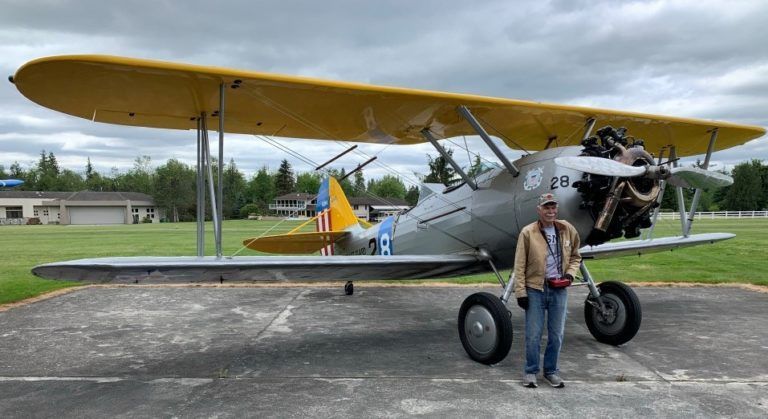
A few moments with Tom Jensen of Evergreen Sky Ranch, 51WA near Auburn, Washington, and you learn he’s had a vast amount of aviation, aeronautical, volunteer, and life experience. “I caught the aviation ‘disease’ very early. I was hand cranking a Navy N3N open cockpit biplane. You put the crank through the side of the cowl. You spin the flywheel, and engage the clutch. When that radial belched smoke and stink and spun to life, I got it,” Tom says. “The N3N was built out of leftover dirigible parts, and was certified for wheels and floats,” he added. By 1973, Tom had his private license, and by 1980, a dream home on a grass airstrip. His hangar now shelters his 1956 Cessna 180 and his wife Marian’s 1976 Citabria, along with their 1941 N3N-3, one of the four originally given to the Coast Guard. “Flying in that open cockpit in a t-shirt is wonderful,” he said, referring to a recent flight in balmy Pacific Northwest weather. Tom helped organize Washington Air Search and Rescue, and has “lots of hours” flying search and rescue. Tom, now in his eighth decade, has engaged himself from Circle, Alaska to Australia, not all of it a result of flight. Sit down around a campfire and ask him about re-powering a Bucyrus-Erie 750-ton dragline for a gold mine near Alaska’s Ester loop highway. Or about some of his Search and Rescue flights, one of which was for a lost hiker near Mount Adams. Tom’s search was confounded by an all-out search unfolding at the same time for a sheriff’s deputy who’d gotten himself lost on a hunt for a marijuana patch. The county helicopters and ground vehicles jammed Tom’s radio frequency. Ask him about the Dornier seized during a narcotics raid that he ferried to the state auction. His wife held his arm down so he couldn’t bid on it. But he did end up with a Dornier Do27 for two years. Get comfortable and ask him about the airplanes from the Israeli Air Force. Or hunting wild pigs on David Packard’s ranch in California. Throughout all, Tom’s passion to give back emerges. His father graduated from law school in the depth of the Great Depression. As a country lawyer in Santa Ynez, California, he often got paid in-kind. Bales of hay and other commodities were good as cash to him. The senior Jensen wrestled in the 1932 Olympic Preliminaries, and wished to join the military. But the Army wouldn’t take him because of his flat feet. So Mr. Jensen fought his own war, and challenged America’s internment of Japanese on Constitutional grounds. His sentiments were not popular in the day, and triggered a local newspaper to dub him a member of the “Kiss A Jap A Day” club. “He was seventy years ahead of his time,” Tom reflects, adding, “Dad did a lot of ‘give-back’, which may be where I got it.” His dad helped establish the Santa Ynez airport (KIZA) in its present location where Tom remembers his first plane ride in a Cub. The strip was initially gravel, and Tom witnessed a Cub ground loop. “It dragged a wingtip and came to a stop in a cloud of dust with two fools laughing like idiots,” Tom recalls. Tom’s first wife, Nancy, was treated at the University of Washington by an oncologist who Tom calls “a caring physician,” who motivated Tom to support her research there, generally for ovarian cancer, “to do the most good for the most women,” he says. Professionally, Tom completed a 46 year career with the Boeing Company. “I was fortunate to work on three different commercial airplanes from preliminary design to first flight,” he says, along with flying boats – hydrofoils where he was an “industrial diver”, electrically powered flight controls, a spacecraft, and missiles. Since 1965, Tom has watched as ten airports were closed in Western Washington. He met the RAF and its mission really inspired him to provide support and get involved. He was part of the work party during last fall’s fence project at the USFS airfield at Moose Creek, Idaho. “I was healing up from a hernia operation, but did my best to keep up with the other volunteers, especially Lisa Ballantyne. The whole operation was wonderfully organized. I was lucky to be part of that event,” he added. Now Tom has his eye on getting Rogersburg (D69) reopened near the confluence of the Grande Ronde and Snake Rivers along the Oregon-Washington border. Volunteer pilots from Idaho, Oregon, and Washington have been involved, and Tom hopes that together with the RAF, recreational access can be restored. By Carmine Mowbray
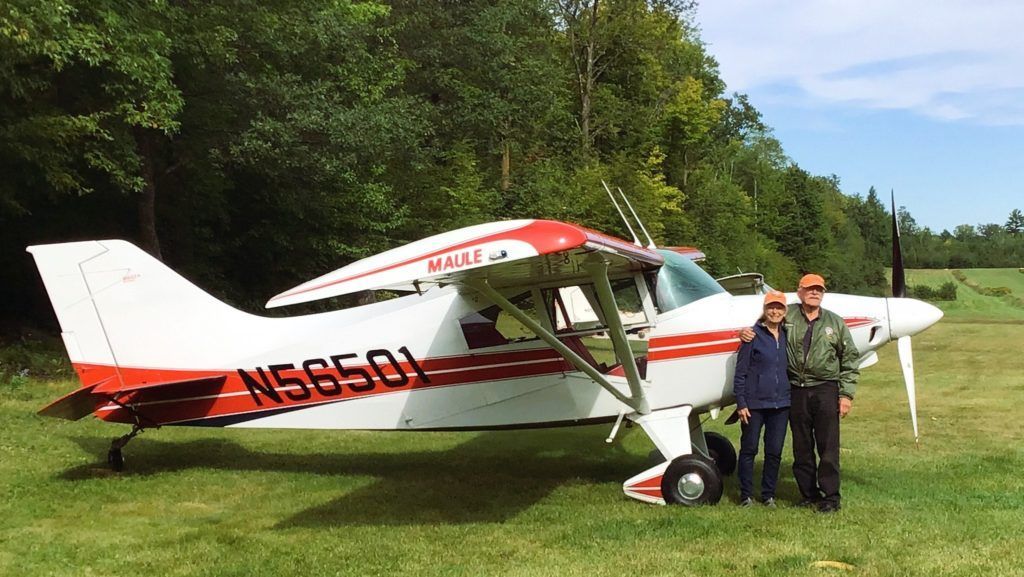
When you meet Bob and Judy Gillette, it’s easy to imagine them sailing their traditional two masted teak ketch off the California coast, or tooling around the Midwest countryside in one of their vintage wire-wheeled Jaguars. Visitors have enjoyed Gillette’s warm hospitality after landing on their 2,400-ft turf airfield
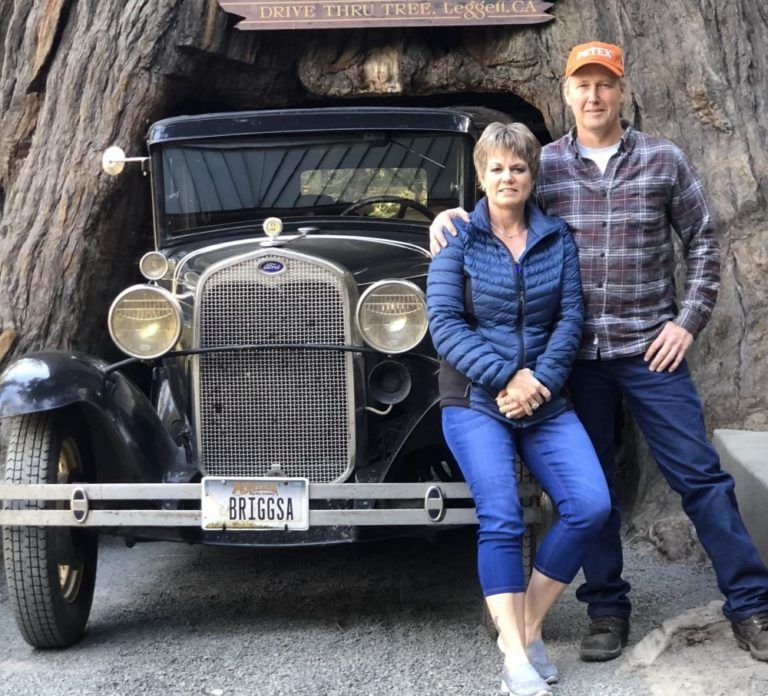
These two Montanans were raised in the little timbered town of Trout Creek, along the Clark’s Fork of the Columbia River as it heads northwest to Lake Pend Oreille in north Idaho. Their families were in the logging business, where Becki “Pete” and Dan picked up their work ethic and resourcefulness. Dan absorbed an acut
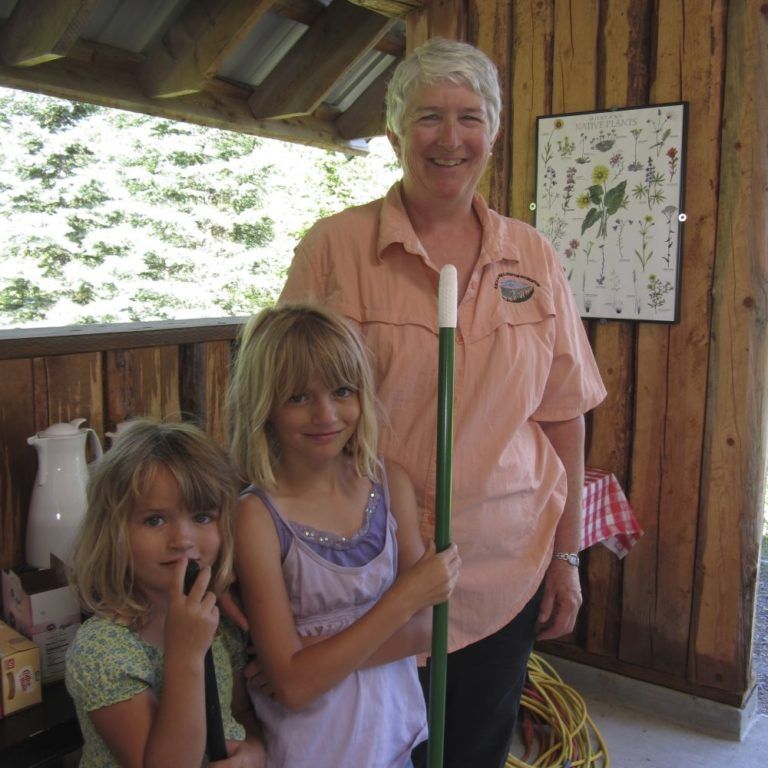
To say Margie Prill is husband (and RAF co-founder) Dan’s “backup” is true, but it only tells part of the story. “We hosted a burger barbecue in our hangar in Sand Coulee way back in about 2002. More than a dozen folks came, and the topic was backcountry recreational flying, and building interest in preserving…
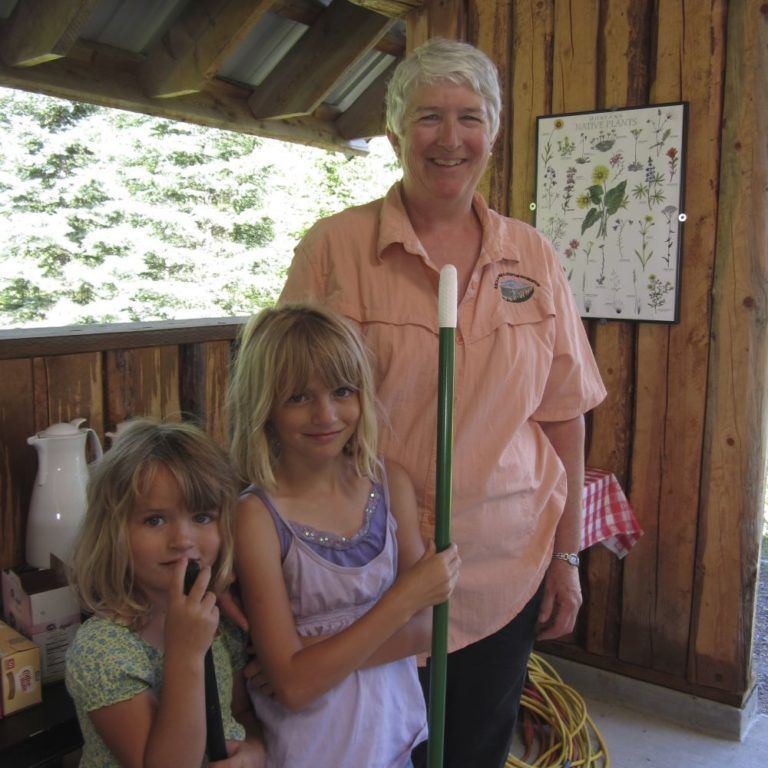
These two Montanans were raised in the little timbered town of Trout Creek, along the Clark’s Fork of the Columbia River as it heads northwest to Lake Pend Oreille in north Idaho. Their families were in the logging business, where Becki “Pete” and Dan picked up their work ethic and resourcefulness. Dan absorbed an acute interest in mechanical things, and learned equipment skills essential in the woods. They share a passion for the outdoors and enjoy camping, hiking, fishing, and did a lot of cross-country touring on their Harley. A head-on encounter with a deer resulted in eight broken ribs for Dan. “We got banged up pretty bad,” he said. The accident was clearly a sign to find a safer form of recreational travel. The Normandeaus never intended to become pilots. Dan, at age 50, thought he was too old to take up flying. He was having lunch with some local pilots, one of whom was easily in his eighties. “The fella told me that I’d only have thirty years of flying ahead of me, so I came home and told Pete I was going to buy an airplane.” For the same price they’d have paid for a new Harley, they bought a Pietenpol Air Camper. Dan started taking lessons in the two-seat open cockpit homebuilt in November. “My flight instructor was frozen. He was pretty motivated to solo me.” They acquired a yellow PA 11, and a red and white PA 18. Pete wanted to be a safe backup pilot, so she got her private pilot license, and enjoys flying both aircraft. Dan was eager to try flying into the backcountry, but was appropriately wary. He’d read all the warnings. “I took my dad into Moose Creek in Idaho. I was still fairly green. My heart was racing a hundred miles an hour. We landed and I said, ‘This is fun!’ ” The Normandeaus enjoy flying and landing in the backcountry throughout the West – Washington State, Idaho, Oregon, Utah, and Colorado. Pete’s son lives in Grand Junction, and they fly there. “We’ve landed at Leadville, the highest public use airport in North America,” Pete adds. Their blue heeler wears a “thunder shirt” and rides tandem behind them. When the mission requires, they each fly one of the Cubs. “Between the two of us, we have that Cessna 180,” Dan jokes. “It just takes two planes for us to haul passengers and camping gear.” “Friends give us a hard time about our slow pace,” Pete says, but she replies, “We’re never in a hurry.” Pete and Dan were camping at Moose Creek and met RAF President Bill McGlynn, who explained the RAF mission and invited them to the Ryan Fly-in the following weekend. “Planes were lined up all along that nice airfield, and we met the best people,” Dan said. When John McKenna learned the Normandeaus had dump trucks, an excavator, Cat, and trailers, he got them involved in all the renovation at Ryan Field. “It was quite the adventure — at first I wondered ‘What did I get myself into?’ We got treated great, and have ever since. We really like the RAF mission. It’s our cup of tea,” Dan says. They’ve pitched in at nearly every work party there since. When they’re not flying, Dan and Pete enjoy touring the nation in their restored 1930 Model A Sedan. “Our first adventure in it was driving to Pikes Peak – a higher elevation that we’ve taken our planes,” Pete says. You may spot Pete and Dan adventure touring scenic byways or backcountry airstrips in their pristine Ford, or one or both of their fetching Cubs. It should be no problem catching up to thank them for all they’ve contributed to the RAF mission. Submitted on December 14, 2023 By Carmine Mowbray
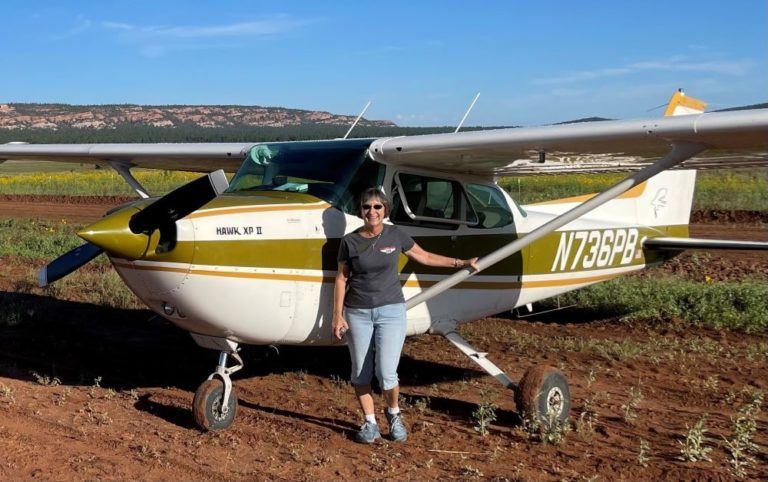
Joyce Woods simply and wholeheartedly “gets it” when it comes to the RAF mission. Not only does she get it, she loves to work with people to make a difference in aviation. “I’m a facilitator. I work behind-the-scenes, pressing for clear action plans and follow through.” Maybe her career in chemical manufacturing prep
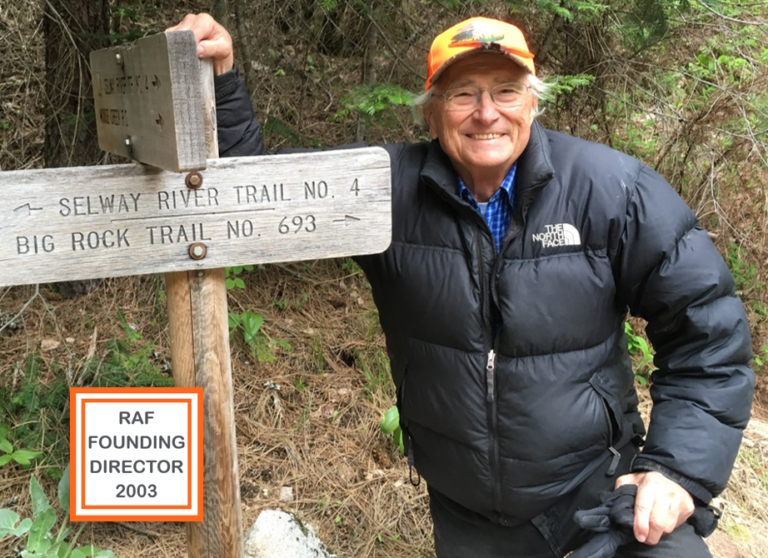
“When I raised my hand at a Montana Pilots Association’s Directors retreat in Bozeman in September of 2003, I had no idea what I was getting myself into,” Jerome “Jerry” Cain says of his role in the eventual formation of the RAF. Jerry, as one of the original six Founders, tapped his Defense Department Federal…
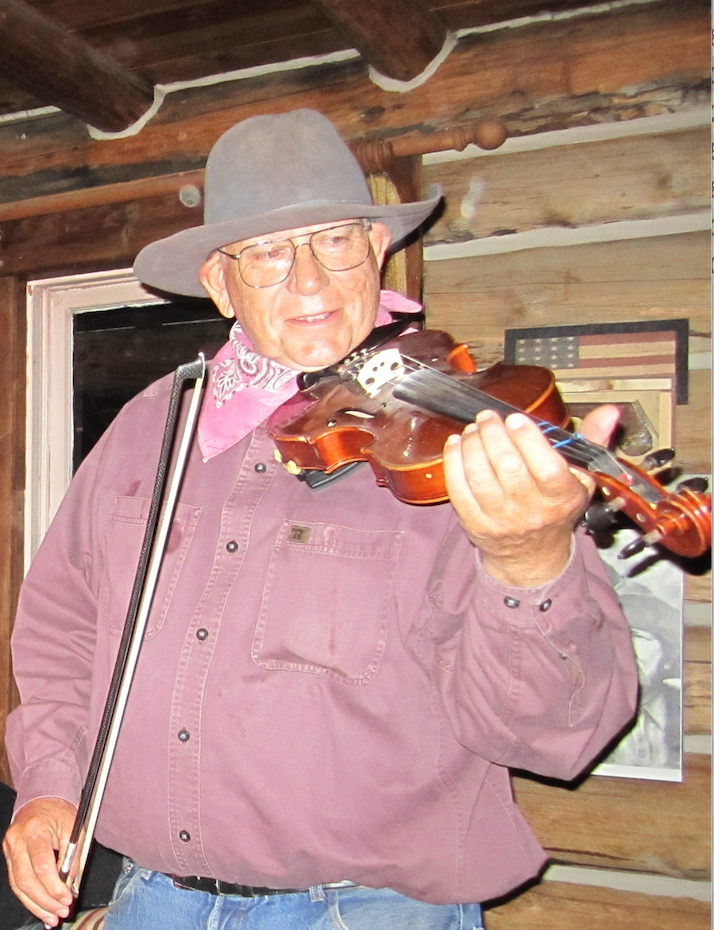
Dan Prill of Sand Coulee, Montana, has interests as varied as the snacks aisle at your supermarket. From flying his Cessna 185 off his own airfield, to the slower pace of trolling for fish in his kayak. For many summers, Dan and his wife Margie flew their SuperCub on floats to his family’s rustic fly-in…
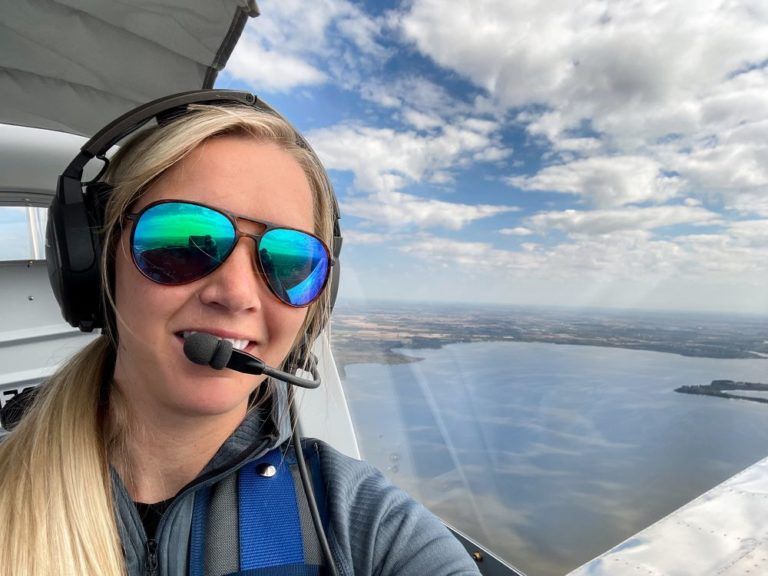
Peyton Wolter is a true outdoors enthusiast with roots deeply embedded in the woods and lakes of Wisconsin. From a young age, the outdoors has been a constant in her life. She developed a passion for active pursuits and never backed down from a new adventure. Hunting, fishing, hiking, snowmobiling, wakeboarding, scuba diving – she loves it all. Her journey took an unexpected turn in 2017, when she was a passenger in a boating accident while fishing in Canada. The incident resulted in a T10 spinal cord injury, leaving her with unforeseen challenges. However, Peyton’s resilient character shone through, and she chose to embrace change and strive for self-growth. During her recovery, Peyton was introduced to her first flight and the world of aviation. The freedom and sense of community that general aviation offered, resonated deeply with her roots, and she was hooked to the skies from day one. In 2020, with the support of the Able Flight scholarship, she achieved her Sport Pilot’s license, marking a significant milestone in her story. Today, Peyton works in marketing in the outdoor industry and maintains an active lifestyle that is interwoven with her passions. Alongside her hobbies, she cherishes quality time with her family and beloved dog. Traveling to experience new places and immersing herself in diverse cultures is also an integral part of her life. She continues to fly with friends and looks forward to owning her own adapted plane one day. The world of aviation holds boundless opportunities for Peyton, fueling her passion for outdoor recreation and seeking new adventures. Submitted on June 20, 2023.
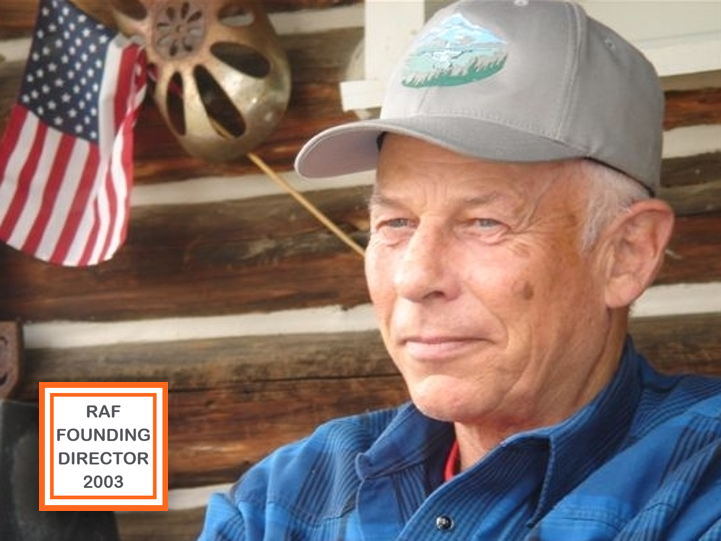
To simply call Chuck Jarecki of Polson, Montana, an “RAF Supporter” falls way short of the contributions this pilot and retired rancher has made to the RAF and to general aviation. He was one of those six fellows around the campfire who recognized the need to protect aviation access to the backcountry, and asked, “If…
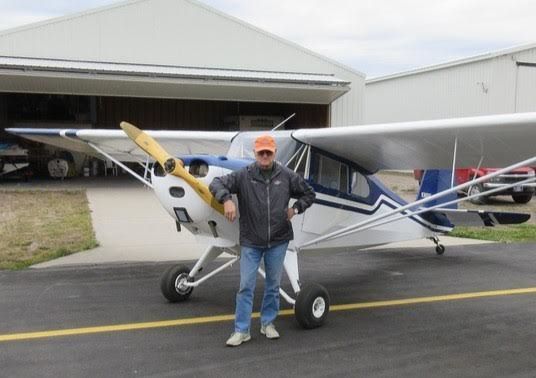
It’s hard to believe that Ron Normandeau’s aircraft started out as a box of airplane parts. Ron, of Polson, Montana built a beautiful 1947 Aeronca Chief and now enjoys flying his own plane. He began flying in 1962 between junior and senior high school years, and earned his license. Ron’s wife Kathi earned her private…
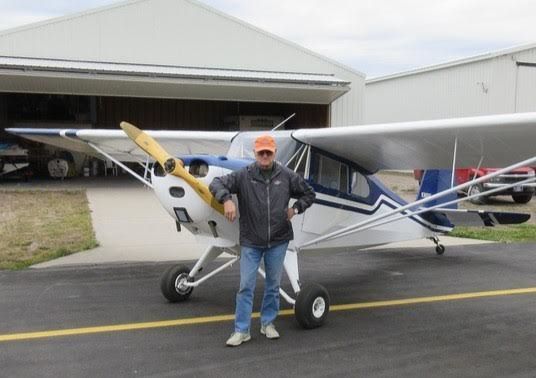
It’s hard to believe that Ron Normandeau’s aircraft started out as a box of airplane parts. Ron, of Polson, Montana built a beautiful 1947 Aeronca Chief and now enjoys flying his own plane. He began flying in 1962 between junior and senior high school years, and earned his license. Ron’s wife Kathi earned her private license shortly after high school, as well, learning from her father who was an instructor. They made an interesting couple, flying together in their early years together. Their son Brett joined the Marine Corps on graduation from high school and was an airframe mechanic on the Harrier jump jet for his five-year tour. During college, Brett joined the Montana Army Air Guard. He earned his ATP and flew for Envoy Air (American Airlines’ largest regional) for a few years before flying Blackhawks full-time for the Guard. “I always supported Brett’s desire to participate in aviation,” Ron says. “Last summer he got his tailwheel endorsement in my Aeronca.” Ron’s 32-year military career includes a year-and-a-half as combat engineer, Special Forces. He was assigned to the National Guard as an active duty advisor to Company C 19th Special Forces, reenlisted, and attended State OCS and was an A-team commander for two years. In the Reserves he spent 16 years evaluating guard and reserve units for readiness; and nine years as executive officer and commander of an Engineer Battalion. A cup of coffee at Polson Airport led to Ron’s involvement in the RAF in 2004. He met RAF co-founder Chuck Jarecki, who took him along to RAF organizational meetings, work parties, and meetings with public agencies. In 2005 the RAF recruited Ron for its Montana State Liaison, one of the earliest to wear the signature orange shirt. Ron brings vast skills to the RAF, having majored in Forest Engineering, specializing in Photogrammetry/Cartography. While in college he was a smokejumper, Forest Service Indian liaison officer and forestry technician. On graduation, he joined the US Geological Survey, doing field surveys. He spent two years in Washington, DC in top secret work; then transferred to Denver’s Cartography division where he participated in the transition from manual to digital mapping. He wrapped up his lengthy career with the US Forest Service as Cartography/Photogrammetry supervisor. “Eventually, I found myself doing more consulting with other RAF Liaisons on public agency matters. I discussed this with RAF President Bill McGlynn and he suggested I become the RAF Public Agency Consultant. I handle calls for guidance almost every week,” Ron says. And other RAF Liaisons are grateful for his experience and help. “I hope to participate in a new program the Forest Service has initiated called ‘Re-imagine Recreation.’ The object is to create a plan for recreation, addressing the great numbers of visitors to the National Forests, and the change in recreational emphasis,” he says. His pursuit of the RAF mission will be part of Ron’s approach. Ron has another passion. Golf – but with a cartographer’s passion. “My one other consuming interest is golf course measurement,” Ron says, explaining his intent. “Establishing a difficulty rating for the golf course. In conjunction with an individual’s handicap, it would allow fair competition between players of different skill levels.” Submitted on May 12, 2023.
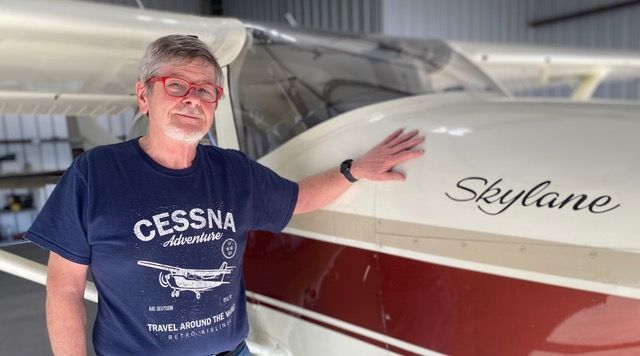
Three things stand out among RAF supporter Bob Martin’s passions: aviation, his devotion to Havana Regional Airport, and the newspapers his family started in 1855. Bob is the fourth continuous generation to publish these Illinois community newspapers. Very few people can talk about how their family members were contemporaries of Abraham Lincoln long before he became the 16th President. “My great-great uncle published the Fulton Democrat, so the newspaper had to endorse Stephen Douglas, even though my family knew Mr. Lincoln, and knew he was a good guy,” Bob says. Bob’s personal email is CessnaBob, and his “daily driver” is a STOL 182H that he flies out of Havana about 80 hours each year. He and his wife Wendy enjoy flying into turf strips for recreation. “Here at Havana, we’re in the middle of nowhere, far from anywhere, so we’re ‘backcountry’ too, including a grass strip,” Bob says. With that spirit, Bob, as a director on Havana’s Port Authority board, has helped improve the airport for recreational opportunities. “When we told him how some visitors flew in to camp just to appreciate the dark night skies here, Mike came up with the idea of doing an Astronomy Night. That has been hugely popular with the community,” Bob says. “The RAF actually has played a big part in the direction the airport has taken in recent years,” Bob says. It was seeing the airport through the eyes of RAF Illinois Liaison Mike Purpura that opened their eyes to ways both the Airport Board and local EAA Chapter 1420 could promote the airport near and far. Purpura is also credited for suggesting the development of a Migratory Bird Fly-In that attracted more than two-dozen visitors from four states just this past March.
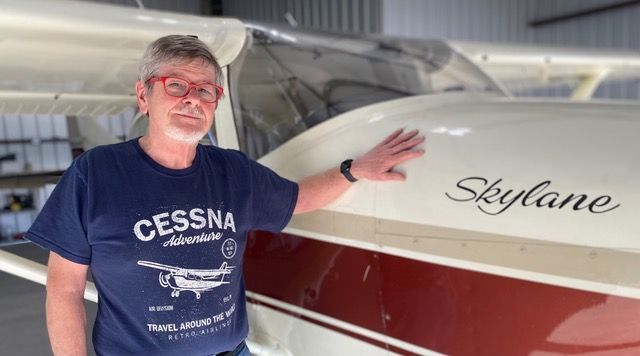
Three things stand out among RAF supporter Bob Martin’s passions: aviation, his devotion to Havana Regional Airport, and the newspapers his family started in 1855. Bob is the fourth continuous generation to publish these Illinois community newspapers. Very few people can talk about how their family members were contemporaries of Abraham Lincoln long before he became the 16th President. “My great-great uncle published the Fulton Democrat, so the newspaper had to endorse Stephen Douglas, even though my family knew Mr. Lincoln, and knew he was a good guy,” Bob says. Bob’s personal email is CessnaBob, and his “daily driver” is a STOL 182H that he flies out of Havana about 80 hours each year. He and his wife Wendy enjoy flying into turf strips for recreation. “Here at Havana, we’re in the middle of nowhere, far from anywhere, so we’re ‘backcountry’ too, including a grass strip,” Bob says. With that spirit, Bob, as a director on Havana’s Port Authority board, has helped improve the airport for recreational opportunities. “When we told him how some visitors flew in to camp just to appreciate the dark night skies here, Mike came up with the idea of doing an Astronomy Night. That has been hugely popular with the community,” Bob says. “The RAF actually has played a big part in the direction the airport has taken in recent years,” Bob says. It was seeing the airport through the eyes of RAF Illinois Liaison Mike Purpura that opened their eyes to ways both the Airport Board and local EAA Chapter 1420 could promote the airport near and far. Purpura is also credited for suggesting the development of a Migratory Bird Fly-In that attracted more than two-dozen visitors from four states just this past March.
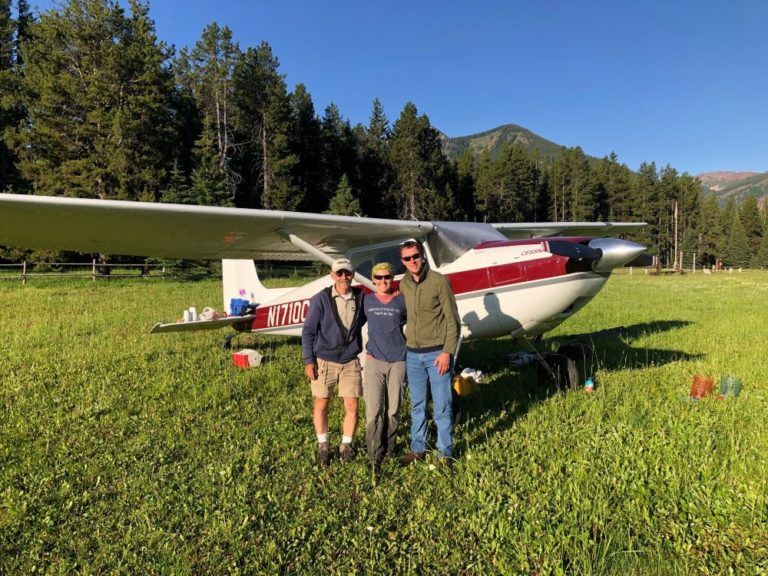
Pete cut his teeth on light metal fabrication in the business his father started in northern Virginia 50 years ago. They moved it to the central Montana town of Lewistown 32 years ago, and are now a substantial employer, with over 40 employees in the town of 6,000 folks. Called “HCR” (for Horizontal Curvilinear Re-circulator), their innovations have resulted in sales of fog, frost and ice free Air Doors for customers all over the world. “If you’ve been to the Dairy or Produce section of a Costco or a Sam’s Club you’ve probably seen our product,” Pete says. On one business trip to China, he took his daughter Rosie who was studying Business in college at the time. “We were treated to a 14-course meal, including soup with the the rooster’s head floating in it, complete with [comb and wattle].” Pete began flying in 1975, just out of high school, in Frederick, Maryland (home of AOPA), then got his A&P through an Associate of Science program at Frederick Community College. While working, he earned his SEL and MEL certificates, and earned his Inspection Authorization (IA) certificate. He then attended the University of Maryland for his degree in Aerospace Engineering. For three years, he worked as a civilian engineer at Pax River, home of the Naval Air Test Center, working in rotary wing flight testing for U.S. Marines. “Since then, I’ve always, flown, owned, and worked on airplanes,” he says, “enjoying it now as a hobby.” While in AP school, he rebuilt a 1946 7AC Champ, and still has it. Of his three children, his daughter Rebecca was the one who was most thrilled to learn to fly. “Rebecca learned to fly the Champ as soon as she could reach the rudder pedals,” Pete explains. “I’d sit in back and let her fly.” When she soloed, Pete says he was standing on the turf strip near a badger hole. “I was more worried about the badger coming up and meeting harm, than I was about Rebecca’s ability to land safely.” She moved on to their C180, and is now commercially licensed to fly UAVs for her employer, the Bureau of Land Management (BLM). Pete has taken on another aviation challenge, having bought into a North American T-28 “Trojan” with a partner. “We’d like to offer rides to Vietnam War veterans, since the T-28 played a role in Laos during the War,” Pete explains. U.S. pilots taught Laotians to fly them for attacks on the Ho Chi Minh Trail. “We hope to add a Bird Dog (tandem Cessna 170 observation aircraft) for rides as well, as a tribute to their service.” He is anticipating traveling to Texas to get his type-rating in the T-28. Some consider the T-28 the most complex trainer the military ever had. ”There are three different ways just to open the canopy,” Pete says. It could handle up to one ton of weaponry under each wing. With its 1,425 hp nine-cylinder radial, he’ll need to be ready with a lot of right rudder. Pete’s been involved with the RAF from the beginning. His family has always enjoyed flying into the backcountry to camp, so it was a natural fit for him to get involved. Pete serves the RAF as Liaison to the BLM, overseers of many public access airstrips in the West. As past president of Montana Pilots Association, he has organized work parties and flyouts throughout Montana’s backcountry. “I have a good location in the center of the state,” he says. He has generously donated time and material designing and fabricating handy logo key fobs, pancake turners and bottle openers, to laser cut RAF fire rings and sturdy “bear boxes,” refrigerator-freezer-sized containers for food storage, strong enough to keep the grizzlies out. His son Matthew inherited an eye for design and is working in high-end architecture. Matthew designed the commemorative P-38 floor inlays honoring Ben Ryan that impress visitors inside the Ryan Barn. Pete says he devotes his time because he supports the RAF commitment to keeping backcountry airstrips “open and alive, and the interesting people you meet by being involved in the RAF.” Submitted on March 15, 2023.
